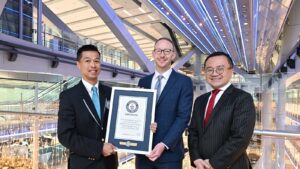Recently, three distinguished members of the Million Dollar Round Table (MDRT) – Sandro Forte, DipPFS, CSP, Tony Gordon and Brenton D. Harrison, agreed to talk with Insurance Forums for a “Q&A” about how they have successfully navigated the often challenging waters of dealing with clients from different generations.
In today’s Part 1, we’ll get a little background on the panelists’ practices before touching on the “ideal client,” whether they have made a conscious effort to target a younger generation, and differences in preferences between generations.
In Part 2 on Thursday, the panelists will talk about how to help Millennials close their excessively large life insurance coverage gap, and how advisors can begin to involve and work with the children of clients in order to ensure continuity.
 To learn more about the three panelists, see the bios at the end of the article.
To learn more about the three panelists, see the bios at the end of the article.
Finally, we want to thank MDRT for their cooperation in making this happen, as well as each of the panelists for graciously sharing their high-level expertise. There are some great tips and information that can help producers striving to grow their practice reach that next level.
Q1: A little background please…
Insurance Forums: Please give us a brief overview of your practice, and what kind of a generational split comprises your client base.

Sandro Forte, DipPFS, CSP: The Forte Financial Group is a broadly based financial planning and wealth management business, which has been established for 23 years. We have a diverse range of clients from entrepreneurs, high net worth individuals, retirees, divorcees, celebrities and athletes. We have developed a reputation as a ‘safe pair of hands’ due to the guaranteed advice and service charters we offer that enables each client to create their own bespoke servicing programme. Our client mix includes 55% Boomers, 35% Gen-X and 10% Gen-Y and Millennials.
Tony Gordon: Although I am currently retired, I continue to stay engaged in the financial services industry as a professional mentor and consultant for other advisors. When I was actively selling, my practice was an independent agency that worked with business owners on comprehensive financial plans. I did not view my client base in terms of generations and instead was drawn to business owners. I focused my efforts to serve those in a similar situation as myself since I understood the problems of owning and managing a small, closely held business, and became the person that my business owner clients trusted.
Brenton D. Harrison: I came into the business in 2009 with a local John Hancock office. After a year of training I joined an affiliate firm, Henderson Financial Group, whose owner was actually my parents’ financial advisor when I was growing up. Our firm operates similarly to a law firm in the sense that we market ourselves as one entity while each of us have our own specialties.
The majority of our firm’s clients are African-American, high-income earners in the field of medicine. We also provide financial planning services to the bishops and ministers of the African Methodist Episcopal Church and the Baptist Church. As for my personal client base, I work primarily with individuals under the age of 45 who have young families.
Q2: Who is your ideal client?
Insurance Forums: Tell us about your “ideal client” – in addition to which generation you prefer to work with, what else do they tend to have in common, and what makes them preferable in your eyes over other demographics?

Gordon: An advisor’s ideal client changes as they age and as the marketplace undergoes regulation shifts. For instance, most of my clients grew with me as I grew in my business, typically falling within a five-year age difference. As an early Baby Boomer, I found my generation was the easiest to identify through prospecting and referrals and resulted in a client base to which I could best relate. I preferred working with my own age group for various reasons since I identified with their financial challenges, we were in similar life stages and the shift of their objectives related to investments needs aligned with my expertise.
Similar to how advisors tend to target those in their same age groups, my ideal clients were those in a similar business situation. Business owners often need someone they can rely on who understands business issues related to management and financial planning. When you are employed, you most likely have a retirement plan, 401(k), life insurance or health insurance provided by an employer. However, you are on your own when you are the business owner. Therefore, the challenge and case is more significant and preferable.
Harrison: My ideal client is a married, first-generation, high-income earner with children. To me, purchasing insurance is a selfless decision when you have a family. The policyholder ensures that someone, or something, they love will be provided for if they become disabled or deceased. I’ve found success in working with first-generation, high-income earners because they don’t have to be convinced of how important it is to make preparations for their loved ones. They know exactly how vital their income is to their family and are ready to act. A younger client base enables multiple selling opportunities as their income grows over the years and they progress from smaller to larger policies, from term to permanent coverage and expand with areas like disability coverage.
Forte: Whenever we take on a new client, one of the agenda items is always to discuss the benefits of a long-term relationship with our clients. We are not interested in transactional financial planning, so if we get a sense a potential client might not value our comprehensive advice and/or services, then we would politely decline to progress matters. The selection process should be two-way and mutually beneficial.
My ideal client is a 50 to 60-year-old with two to three children and possibly grandchildren. In regards to financial planning they would want to build a progressive, long-term relationship with an adviser they like and trust, someone they know they could refer with confidence. They see the benefits of inter-generational planning, recognize the value of financial advice and take accountability for their own decisions by seeking to become better informed and educated.
Q3: Any shift toward younger clientele?
Insurance Forums: Assuming you have traditionally worked primarily with older clients, is there a point (or will there be a point) where you made a conscious decision to start targeting younger clientele? If so, how important do you see that shift being to the future prosperity of your practice?

Harrison: While I do have some older clients, I actually made the decision fairly early to focus on building a young client base. Part of that choice was made out of necessity, as I simply knew more people my age that I could reach out to and ask for a meeting. I stuck with that decision when I realized how few advisors actually take the time to target the younger market. In Nashville, there are only a few advisors my age who have remained in the business longer than two or three years and there aren’t as many who compete for younger prospects’ business. If you can find a way to streamline your practice so that it’s profitable to cultivate that market, it’s a great place to focus your efforts.
Forte: There cannot be a particular point at which one makes a decision to start working with a different demographic, rather this should be a progressive part of an overall business strategy. This is because, inevitably, one must adopt a different approach to work with different kinds of individuals. For example, we represent a number of professional soccer players. Our relationships are strong because we took the time to build trust with them when they were young apprentices living at home and earning relatively small amounts of money. The simple truth is every wealthy individual, entrepreneur or public figure started out in exactly the same place.
Advisers compete in a very saturated market if they simply look for the larger sales instead of using their basic instincts to build relationships. The ‘Sigmoid Curve’ best demonstrates this point: you cannot continually grow your client bank with the same approach you have always used in hopes that business will grow.
Gordon: The professionals I advise are successfully working primarily with older clients, and I do not foresee a point when they make a conscious decision to target younger clientele. They experience great business results with older clients, and regulations in the U.K. lessen the appeal of a younger clientele. However, when the younger generation ages, their needs and abilities may align with the more sophisticated financial planning that an MDRT advisor offers.
Q4: Differences between generations?
Insurance Forums: If you do serve multiple generations, what are some of the key differences you have experienced in working with Boomers compared to Gen X or Millennials? And do you use different business models when dealing with different generations?
Forte: It’s important to ensure we have different methods of communication to support client service. For example using text, email, WhatsApp and social media are effective ways to connect with younger clients, whereas boomers prefer the personal approach via telephone or face-to-face interactions. Individuals of more mature years tend to do business with the individual and value a relationship more than product or price. Once they make a decision to work with an adviser they tend to be loyal unless and until their trust is compromised.
In relation to educational resources, brochures don’t typically work as well as PDFs with younger clients. Client meetings and events need to be interesting and interactive rather than structured. When responding to referrals the older generation appreciate a handwritten thank you note, whereas younger people prefer more specific recognition. Of course, there will always be exceptions to the norm, but it is typically effective to use a business model which best suits their demographic personality type.
Gordon: Each generation is very different in how they prioritize and manage their financial assets. While I did not sell to Millennials, those who I advise often come to me with their challenges with this age group. Millennials tend to be more independent with their finances and may not understand the value of long-term plans or feel prepared to make the decision to invest in their future needs. While a relationship built on trust with Baby Boomers and Generation X positions advisors to make sales with clients, Millennials need additional coaching to invest in a smart manner. As I guide up-and-coming advisors in the industry, I set them up for success no matter the age groups with which they work.
Harrison: In my experience working with Baby Boomers, they are more likely to make a decision based on trust. They came from a generation where there was an imbalance in the availability of information: the insurance advisor often had access to more information than they did and they would only move forward if they felt the advisor had their best interests at heart. Baby Boomers may not need to see as many options before they make a decision. This is because they trust that you’ve done the research to find the best fit. Older generations have also been around long enough to see the benefits of vehicles like permanent insurance and, if anything, wish they’d purchased more coverage at an earlier age.
Younger clients have been bombarded with advice from unlicensed bloggers, podcasters and financial media personalities who tell them that permanent life insurance is a waste of money or they should always take the cheapest insurance coverage available. These generations won’t simply take you at your word. Moreover, they don’t have to because the Internet allows them to do their own research on anything you put in front of them. They require you to show the steps you’ve taken and the options you’ve reviewed to make sure that your recommendation benefits them before it benefits you. Only then will younger clients start to develop the trust needed to form a lasting relationship.
- Stay tuned for Part 2 of this MDRT Producer Roundtable Q&A on Thursday!
About the Panelists

Sandro Forte, DipPFS, CSP, a 21-year MDRT member with 20 Top of the Table honors and has built one of the UK’s most successful and highly respected businesses. His book, ‘Dare To Be Different’ has sold over 400,000 copies, across more than 60 countries – and it is now published in 8 languages.

Tony Gordon built one of the U.K.’s most successful and profitable financial services businesses during a career spanning 50 years. While doing so he established himself as one of the most successful practitioners and best known personalities in his field. He is a Past President of the L.I.A., now known as the Personal Finance Society, the U.K.’s association for financial advisers. He served for 8 years, representing advisers, on the Board of the U.K.’s financial services regulator. He has spoken abroad in over 50 countries and has been a member of MDRT for 42 years, qualifying for Top of the Table for 41 years. He served as President in 2001, the first from outside North America in MDRT’s 75-year history. Having retired from leading his own firm, Tony now focuses his energies on mentoring financial advisers and speaking. Tony’s best-selling book, “It Can Only Get Better, Tony Gordon’s Route to Sales Success,” has sold over 100,000 copies and is available from the MDRT Store.

Brenton D. Harrison is a Financial Advisor with Henderson Financial Group, Inc., focusing on healthcare practitioners, business executives and religious leaders. He entered the financial services industry with Innovative Financial Group and brings the latest financial solutions to the clients he serves with HFG. Brenton is also a qualifying member of MDRT.
- For more information about MDRT, visit www.mdrt.org













